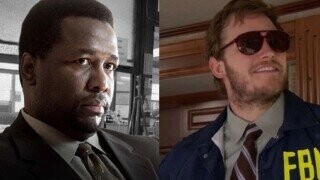How Parks & Rec Is A Comedy Version Of ‘The Wire’

Here’s a thought that no one had while watching David Simon’s harrowingly compelling crime drama The Wire – “I wish this was a sitcom about public parks in Indiana. Maybe bring in those guys who made The Office and throw in an SNL alumnus. Man, that would be the perfect feel-good show!”
That being said, Parks and Recreation, at least in the earlier seasons, attempted to take a humanized and un-glamorized and look at the machinations of local government in the fictional town of Pawnee in a way that was similar to how The Wire treated the endless war on drugs and its impact on the people of Baltimore, albeit through the lens of optimistic comedy instead of gritty realism.

NBCUniversal
Somehow, this comparison was not contrived by us in order to write a grabby title – instead, it originates from an interview that Michael Shur did for The Huffington Post in 2012 shortly before the airing of Parks and Recreation’s season 4 finale.
Don't Miss
When Michael Shur spoke to HuffPo, his interviewer focused on the specificity of the human element in Pawnee’s government while emphasizing the current of boundless optimism that runs through the show, saying that, “Taking the toxic elements out of a political situation and yet incisively commenting on the challenges of government and public service may be, aside from the creation of Ron Swanson, the show's greatest accomplishment. When I spoke to Schur, I put it to him that the show, which features one of the most detailed and specific fictional cities in popular culture, is essentially a comedic version of The Wire. ‘That's the hope,’ Schur replied.”

HBO Entertainment
There aren’t many fictional settings in sitcoms more fleshed-out than Pawnee, Indiana. The city itself feels like a character, with all the quirks and qualms of an overweight, undereducated town in the real-life Midwest. We see the town change over the years as a direct result of the actions of our main cast – Pawnee flourishes under the leadership of Leslie and Ben, going from a sleepy little small town to a bustling mini metropolis that puts kale in milkshakes. Of course, Baltimore is very different from Pawnee – for one, it’s a real place – but both Parks and Rec and The Wire treat their settings as complex and dynamic communities that are slowly but significantly changed by the actions of each show’s heroes and villains over multiple-season arcs.
The differences between the shows are obviously vast and immeasurable. No one is going to argue that anything Greg Daniels and Michael Shur have ever experienced with local government could match David Simon’s thirteen years as a police reporter for The Baltimore Sun, and the level of brutal realism portrayed on The Wire would be woefully ill-fitting on a feel-good sitcom meant to round out NBC Thursday nights. But the approaches that the creators of both shows took to depicting the complicated and sometimes frustrating relationship between a community and their government were similarly sympathetic and nuanced.
The Huffington Post posited that the biggest difference between The Wire and Parks and Recreation was the fact that the latter's unbounded optimism that individuals can change institutions is in stark contrast to the former’s much more resigned views on the matter. Ultimately, Pawnee is not Baltimore – the quaint problems of Indiana weirdos in soft lighting aren’t comparable to the real-life impact of the drug trade in Baltimore. But the emphasis of the human element in the dynamic between ordinary citizens and the government that supposedly represents them is what makes Parks and Recreation probably the closest thing we’ll ever get to a smiley, small-town, nonviolent sitcom version of The Wire.
That, and the fact that the last seasons of both shows blew chunks.
Top Image: NBCUniversal / HBO Entertainment
For exclusive ComedyNerd content, subscribe to our spiffy newsletter:
